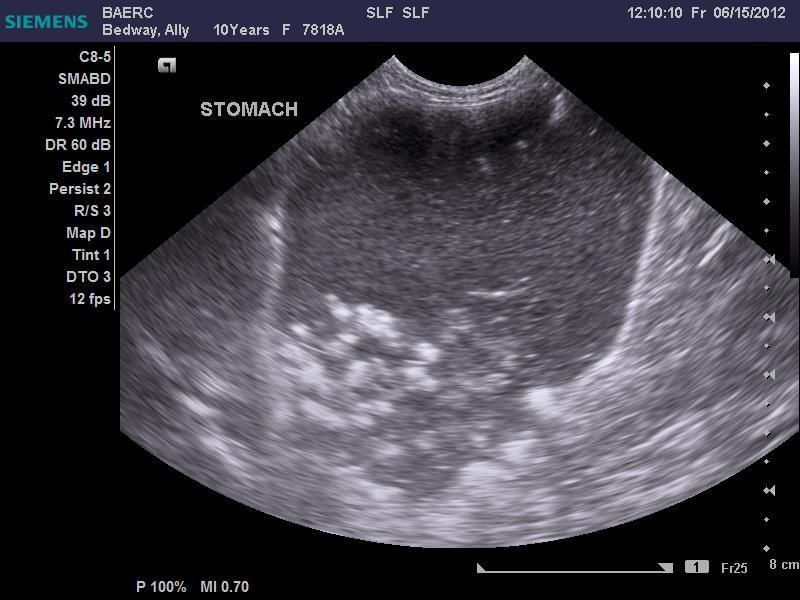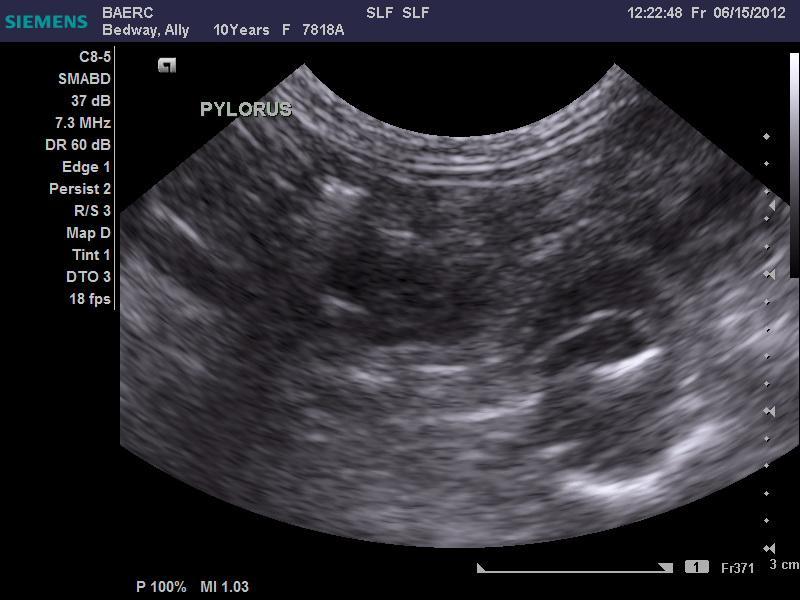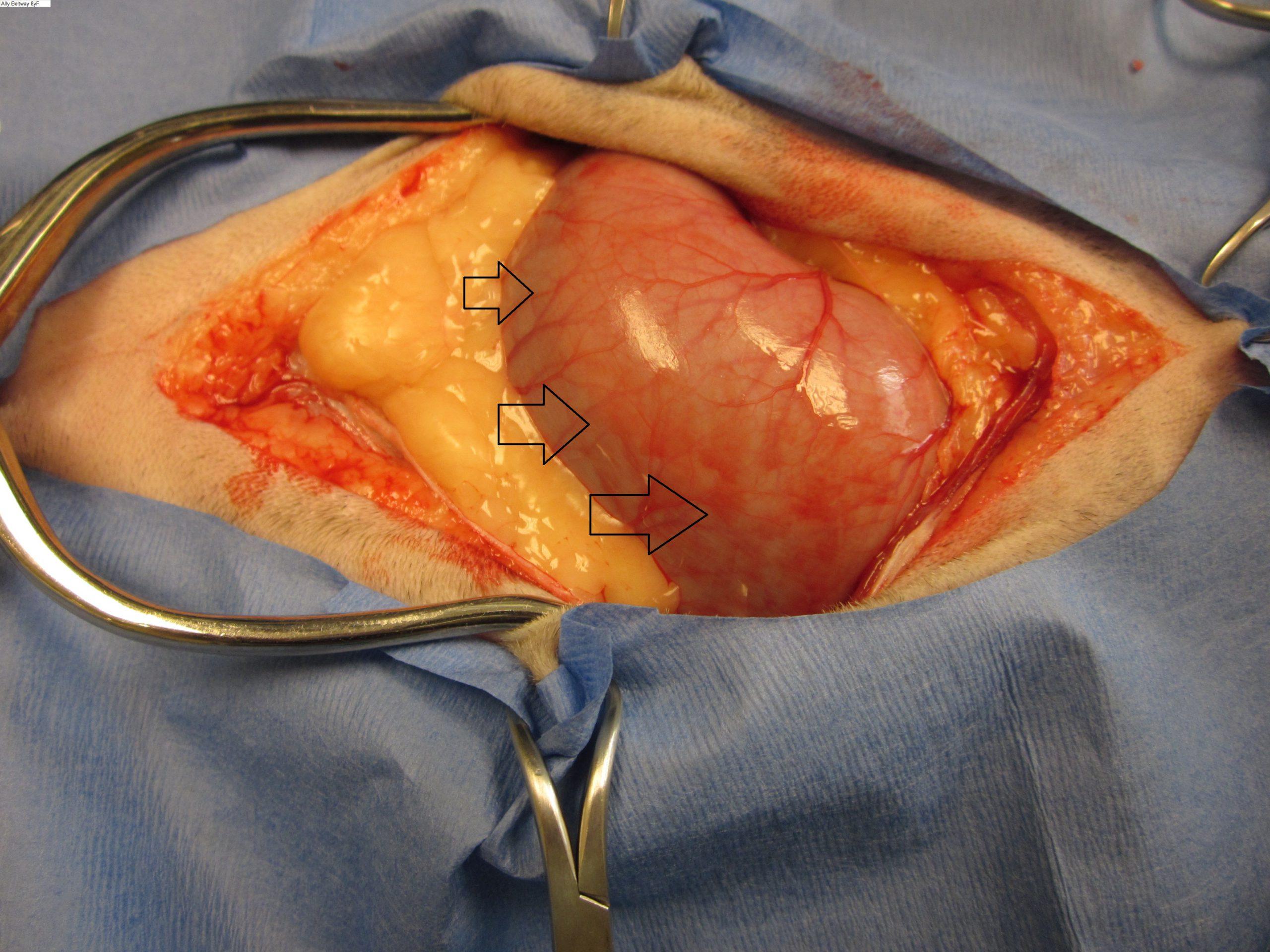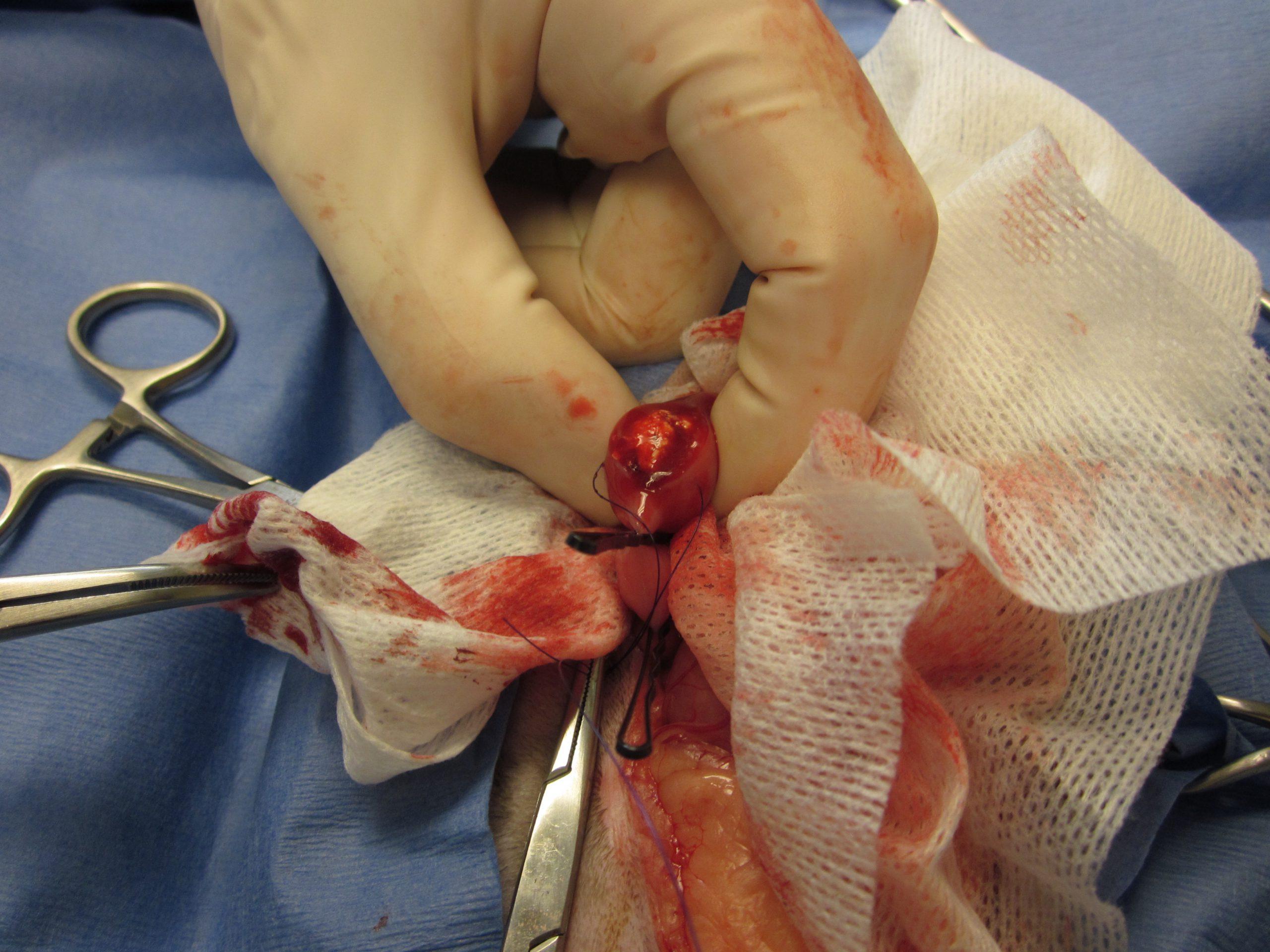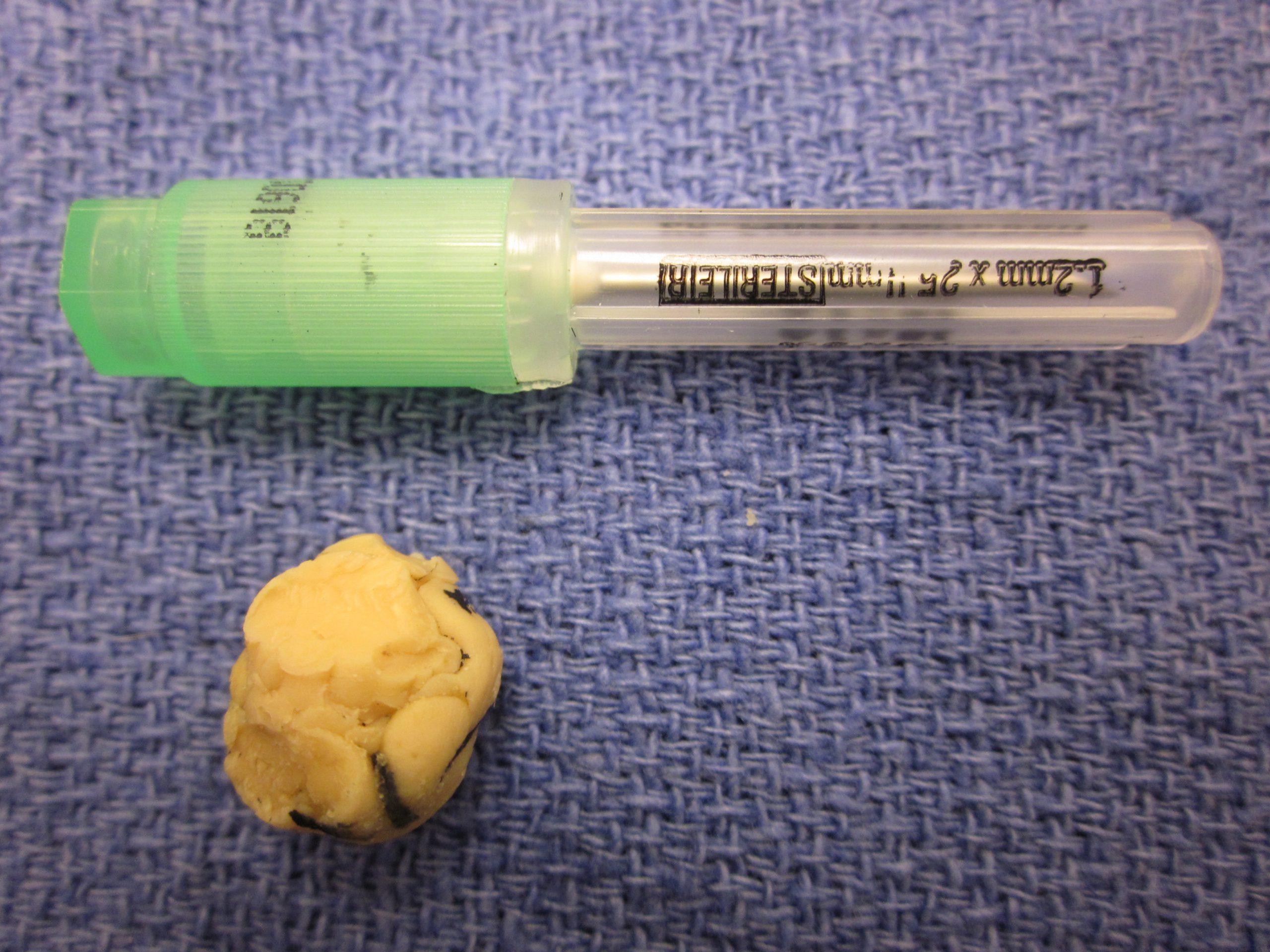Phil Zeltzman, DVM, DACVS, CVJ and Scott Fausel, VMD
Ally, a 10 year old female spayed DSH, had been hiding under the bed. She was presented with a 3 day history of vomiting, anorexia and lethargy. Her physical exam was within normal limits (including rectal temperature) except for a tense abdomen. Blood work revealed increased BUN (45; RR 15-32), creatinine (2.1; RR 0.8-1.8) and ALT (316; RR 0-100). The chemistry also showed low potassium (2.7; RR 3.4-5.3) and low chloride (92; RR 107-125). Abdominal radiographs revealed gastric distension.
Phil Zeltzman, DVM, DACVS, CVJ and Scott Fausel, VMD
Ally, a 10 year old female spayed DSH, had been hiding under the bed. She was presented with a 3 day history of vomiting, anorexia and lethargy. Her physical exam was within normal limits (including rectal temperature) except for a tense abdomen. Blood work revealed increased BUN (45; RR 15-32), creatinine (2.1; RR 0.8-1.8) and ALT (316; RR 0-100). The chemistry also showed low potassium (2.7; RR 3.4-5.3) and low chloride (92; RR 107-125). Abdominal radiographs revealed gastric distension.
Gastric distension – obstruction (foreign body, neoplasia), hypo-motility, areophagia, bacterial fermentation, dysautonomia
Renal disease – chronic kidney disease, pyelonephritis, renolith, ureterolith, neoplasia
First impressions: Hypokaliemia and hypochloremia are typical, although not pathognomonic, for Gastric Outflow Obstruction (GOO). The differential diagnosis for GOO in a 10 year old cat includes pyloric stenosis (aka benign muscular pyloric hypertrophy, mostly described in the Siamese), foreign bodies and certainly tumors. Tumors can be extraluminal (pancreatic, duodenal or hepatic neoplasia) or intraluminal (benign polyp, carcinoma, lymphoma, sarcoma etc).
An ultrasound was performed. It showed a markedly fluid-distended stomach with a moderate amount of ingesta. There was a linear echogenicity within the pylorus. Wall architecture and thickness were normal. Differentials for the gastric findings included pyloric obstruction and gastritis (e.g. uremic gastritis).
The next day, a repeat ultrasound showed that the gastric dilatation had gotten worse in spite of supportive care overnight. This included IV fluids, ranitidine and Anzemet* (Dolasetron).

